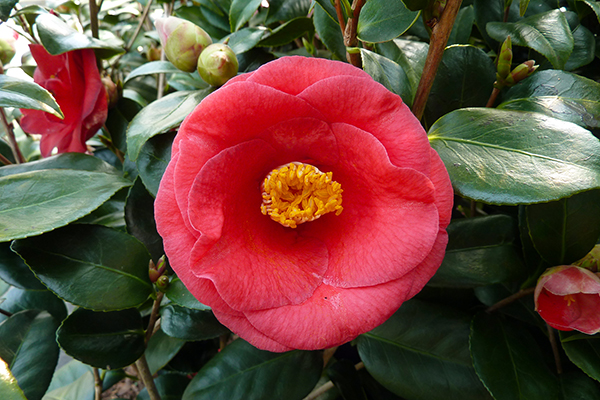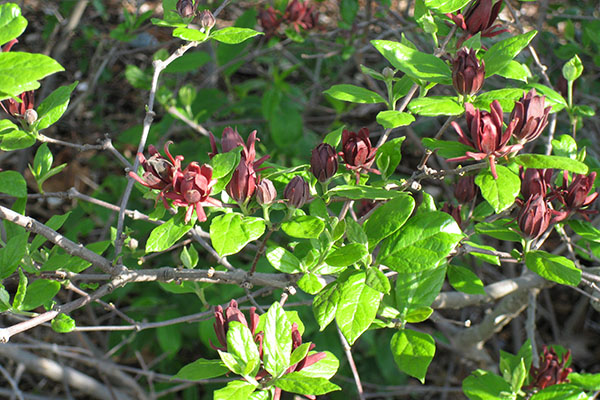Camellia japonica
Japanese Camellia
Korea, Japan
Pyramidal to upright oval. Very regular and formal in appearance.
Some sun, but does better in partial shade. Moist, well-drained, acidic, high organic matter soils.
A shrub of great beauty, and beloved by Southern gardeners, Camellia japonica has countless cultivars. Its elegant, soft flowers come in nearly every color of the rainbow and there are double and triple varieties as well. The plant isn't at all tolerant of cold and needs to be carefully situated in Zone 7. Cold will ruin flower show and may also damage the entire plant. Camellias are useful for formal gardening in the following situations; borders, mixed plantings, or as an accent or focal point. Specimen plant, small groups and as a container or conservatory plant. The container grown specimens in the Longwood Gardens conservatory are spectacular in flower.
Alternate, ovate to elliptic, serrate, 2 to 4 inches long. Deep green and very shiny leaves year round.
Flower buds terminal or in upper leaf axils, imbricate .75 inches long.
Brown stems heavily lenticeled.
Perfect, solitary, 5 - 7 petals, 3 - 5 inches across, white, pink or red. Considerable effort has been spent to create doubles (most all cultivars greatly exceed 7 petals) and color variation in the range stated, including various speckled, bicolors, etc. Plants flower in March - April when grown outside in the Delaware valley.
Woody capsule.
Cuttings.






